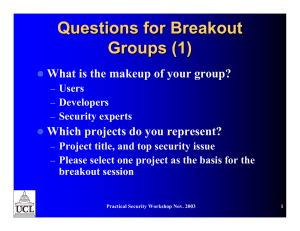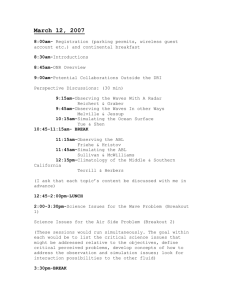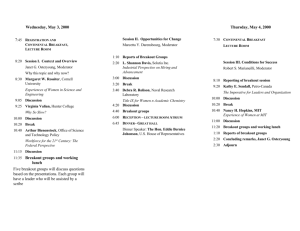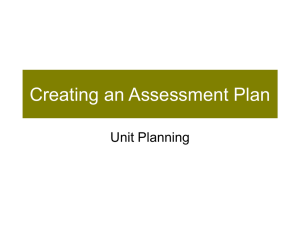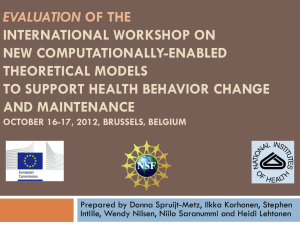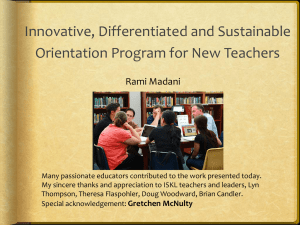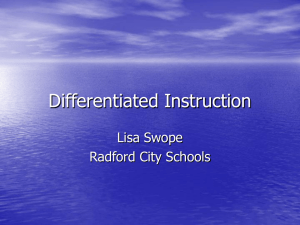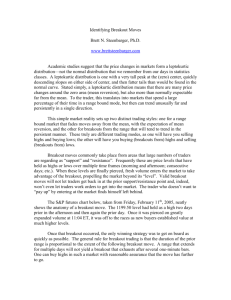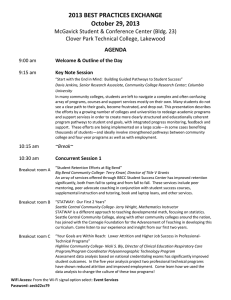Differentiated Instruction
advertisement
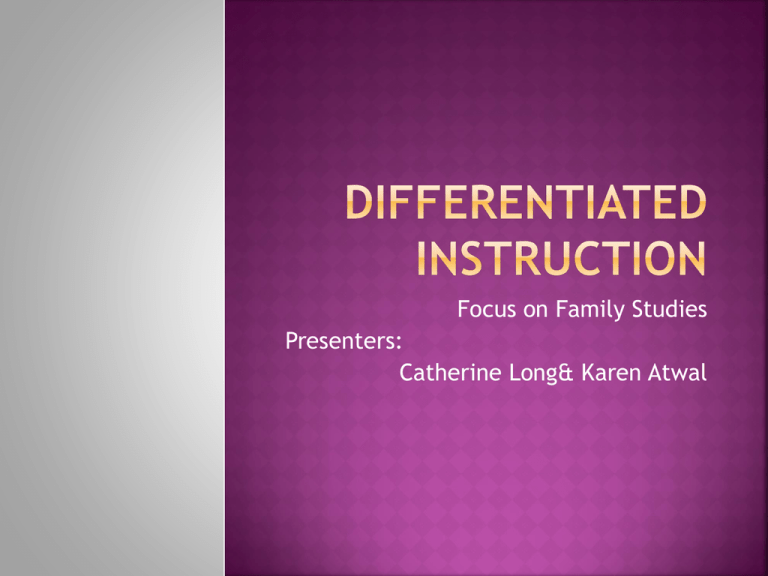
Focus on Family Studies Presenters: Catherine Long& Karen Atwal Focus on the individual learner Responding to a variety of learning experiences Awareness to take deliberate action to meet the needs of all learners Differentiated instruction involves: Using assessment to gather information about students’ readiness, interests and learning preferences Using this information to differentiate the learning environment, instruction, and assessment and evaluation Selecting from a varied repertoire of strategies to meet the particular needs of students From:http://www.edugains.ca/resourcesDI/Brochures/DIBrochureOct08.pdf p.8 Differences in how students learn have a significant impact on achievement Learning begins from a student’s point of readiness A safe, non-threatening and respectful environment is vital Essential concepts can be effectively presented in a variety of forms from: http://www.edugains.ca/resourcesDI/Brochures/DIBrochureOct08.pdf “ Differentiation is an organized yet flexible way of proactively adjusting teaching and learning to meet kids where they are and help them to achieve maximum growth as learners.” Carol Ann Tomlinson, 1999 Time Energy Support Planning Organization Sharing Support of resources Our students have different styles Square pegs do not fit in round holes Take the time to make connections with students Multiple True Intelligences - (H.Gardner) Colours - (Meyers Briggs) Flexible, short-term groupings that allow students to work with a variety of peers with the same or different strengths and interests Engaging and interesting tasks (that address the same skills) for all learning preferences, interests and levels of readiness A reasonable number of well-constructed choices that address identified needs/strengths of students Students working on the same curriculum expectations in various ways with common criteria for success Students learning about themselves to help hem make effective and informed choices Labeling students or grouping by ability Confining some students to low level, repetitive or rote tasks while others engage in higher-order thinking Unlimited freedom for a student to choose whatever they would like to do on any day Different students working on different expectations with varying success criteria (e.g., different rubrics) Teachers assuming the responsibility for making all decisions regarding student choice A chaotic or unstructured classroom environment,. Routines, procedures, and classroom agreements are in place From: Student Success Differentiated Instruction Educators ‘s Package (2010) p.4 DI Doesn’t Mean DI in Family Studies Means: • Developing a plan for rotating groups • It doesn’t mean having one student in food and sewing labs name the baby and the other student change the baby • Theory and practical are key components in all Family Studies Courses • It doesn’t mean grouping academic students and applied level students separately • It doesn’t mean students will cook or sew every day • It doesn’t mean some students make cookies while other make creme brule • It doesn’t mean offering only one “good “ option for the practical sewing culminating • Design a living space by; build a model, create a floor plan on paper or in a designate space • Create characters for a dating site or plan a wedding agenda for THEORIES OF ATTRACTION AND MATE SELECTION • Safety standards for sewing/ food labs Know the learner Know the curriculum expectations Applications of DI for Family Studies From: Student Success Differentiated Instruction Educator’s Package (2010)p. Providing choices in activities such as: HPC30 Parenting- Representation of a family Photo/Magazine collage Written descriptions Artwork/Graffiti Graffiti - Food and Nutrition - HFN10 Introducing/reviewing the Food Guide Write the name of a Food Group on each chart paper. Students move in groups from on paper to another adding information in any creative way Also great for test /quiz review FROM: St. Joseph-Scollard Hall Secondary School Family Studies/Food and Nutrition Our Top 10 Strategies for Helping to Inform Differentiated Instruction: Read your class / know your students Group work and collaboration is very common in the family Studies classroom, especially for practical tasks Being ever aware of group dynamics is often a challenge Set clear standards for communication, respect, and inclusion at the beginning of the term Be consistent - Inspect what you expect Students often tell us what they think we want to hear They attempt to give us the ‘right’ answer Contracts that the students help create can combine non-negotiable items and creative options that the student has a voice in Michael Tudor- Personality Dimensions These will be run in individual class setting by various teachers. Participants will take home a copy of all the resources and handouts that were used in the session. Each session will be a mock family studies class that teachers participate in. These lessons are all DI based and can be used in their own classrooms. 10:15-11:15 Breakout Session 1: DI in Foods Breakout Session 2: DI in Fashion 11:15 Breakout Session 1 or 2: – 12:15Breakout Session 3 or 4: Breakout Session 3: DI in Parenting Courses Breakout Session 4: DI in Families Course
